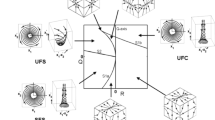Abstract
The spatial structure and temporal evolution of a nondiffusive hot spot are examined in a confined, planar enclosure. The situation is modelled by the reactive Euler equations and single-step Arrhenius kinetics with a large (scaled) activation temperature 1/ε The initial state of the medium is taken to be one of uniform pressure but with a prescribed thermal gradient of order ε across the domain. The induction equations, which govern order ε disturbances to the initial state, are analyzed in the limit of small α, where α measures the width of the domain relative to the acoustic length based on a characteristic reaction time at the initial state. The solution displays a sequence of finite-time singularities as the hot spot grows in strength and shrinks in size in a spatially homogeneous pressure environment. Ultimately, in a region of exponentially small size, significant pressure gradients appear as acoustic and reaction times become comparable and the hot-spot structure is found to obey the full, but previously analyzed, Clarke equations.
Similar content being viewed by others
References
D.R. Kassoy, A.K. Kapila and D.S. Stewart, A unified formulation for diffusive and nondiffusive thermal explosion theory. Combust. Sci. Tech. 63 (1989) 33–43.
J.F. Clarke, Finite amplitude waves in combustible gases, In: J.D. Buckmaster (ed.), The Mathematics of Combustion. Philadelphia: SIAM Publications (1985) pp. 183–246.
J.F. Clarke and R.S. Cant, Unsteady gasdynamic effects in the induction domain behind a strong shock wave. Prog. Astron. Aeron. 95 (1984) 142–163.
T.L. Jackson and A.K. Kapila, Shock-induced thermal runaway. SIAM J. Appl. Math. 45 (1985) 130–137.
J.W. Dold, A.K. Kapila and M. Short, Theoretical description of direct initiation of detonation for onestep chemistry, In: A.A. Borisov (ed.), Dynamic Structure of Detonation in Gaseous and Dispersed Media. Dordrecht: Kluwer Academic Publishers (1991) pp. 109–141.
A.K. Kapila, D. W. Schwendeman, J. J. Quirk and T. Hawa, Mechanisms of detonation formation due to a temperature gradient. Comb. Theory Modelling 6 (2002) 553–544.
T.L. Jackson, A.K. Kapila and D.S. Stewart, Evolution of a reactive center in an explosive material. SIAM J. Appl. Math. 49 (1989) 432–458.
C.J. Parkins, P.A. Blythe and D.G. Crighton, Hot spot ignition: the Newtonian limit. Proc. R. Soc. London A 456 (2000) 2857–2882.
P.A. Blythe and D.G. Crighton, Shock-generated ignition: the induction zone. Proc. R. Soc. London A 426 (1989) 189–209.
C.J. Parkins, Shock-generated ignition, Newtonian asymptotics for the induction domaiun between a contact surface and shock. SIAM J. Appl. Math. 61 (2000) 701–729.
D.R. Kassoy, N. Riley, J. Beberness and A. Bressan, The confined nondiffusive thermal explosion with spatially homogeneous pressure variation. Combust. Sci. and Tech. 63 (1989) 45–62.
J.J. Quirk, T.L. Jackson and A.K. Kapila, Evolution of a compressive pulse in a reactive atmosphere: transition to detonation, In: M.Y. Hussaini, T.B. Gatski and T.L. Jackson (eds.), Transition, Turbulence and Combustion, Vol II. Dordrecht: Kluwer Academic Publishers (1994) pp. 313–329.
M. Abramowitz and I. A. Stegun, Handbook of Mathematical Functions. Washington: National Bureau of Standards (1964) 1046 pp.
Author information
Authors and Affiliations
Rights and permissions
About this article
Cite this article
Kapila, A., Short, M. Nondiffusive hot spot in a confined, narrow domain. Journal of Engineering Mathematics 45, 335–366 (2003). https://doi.org/10.1023/A:1022610730167
Issue Date:
DOI: https://doi.org/10.1023/A:1022610730167




